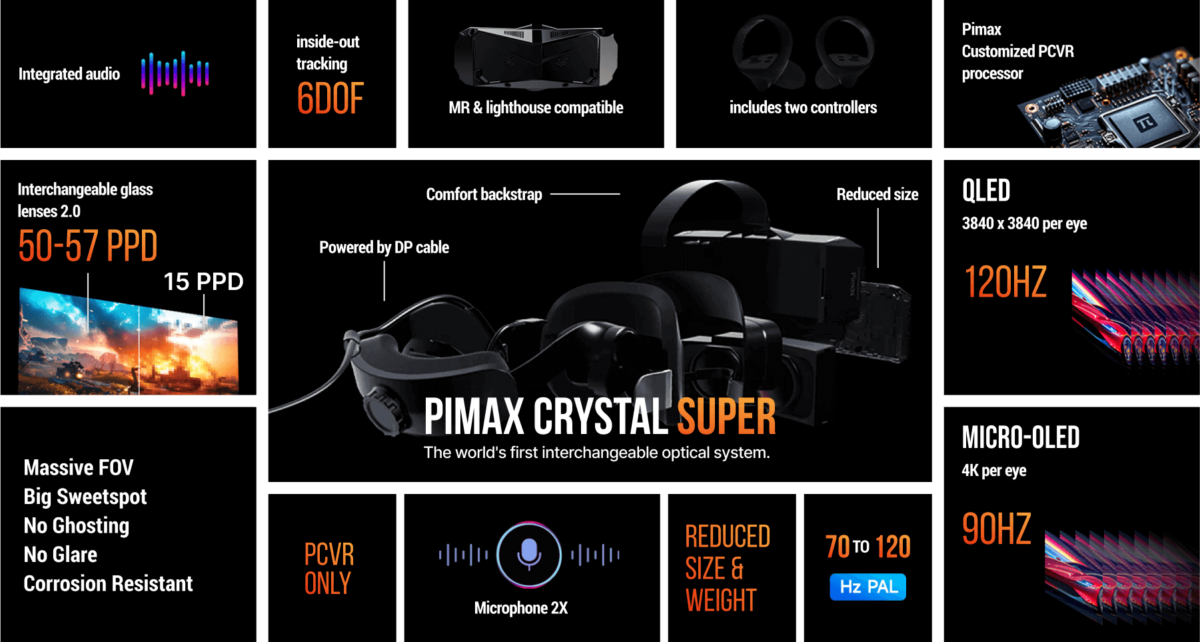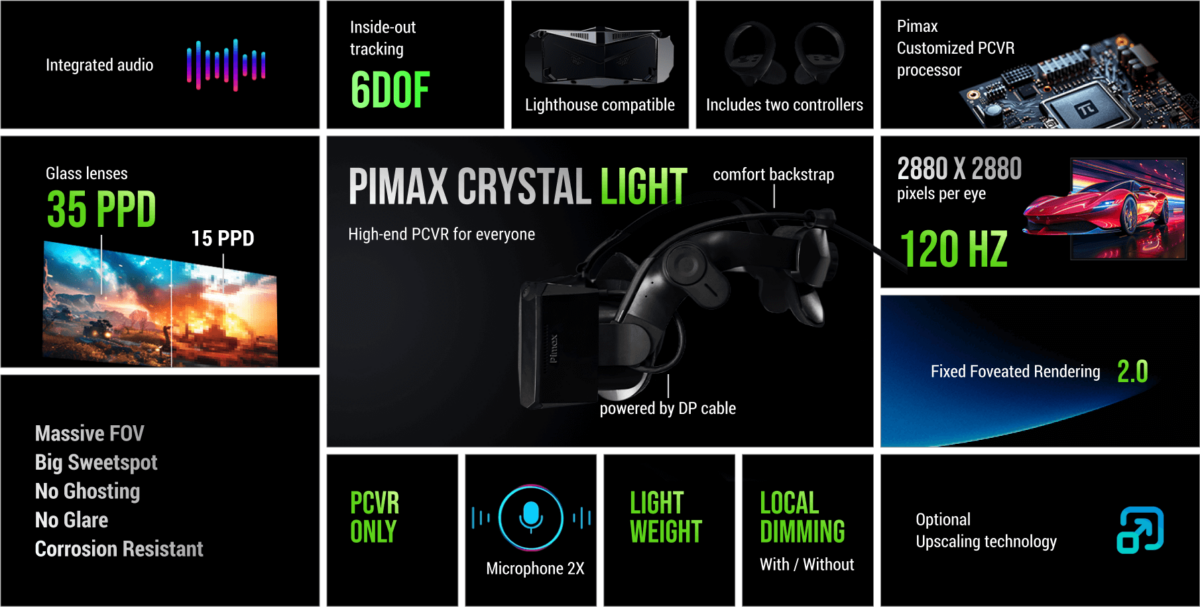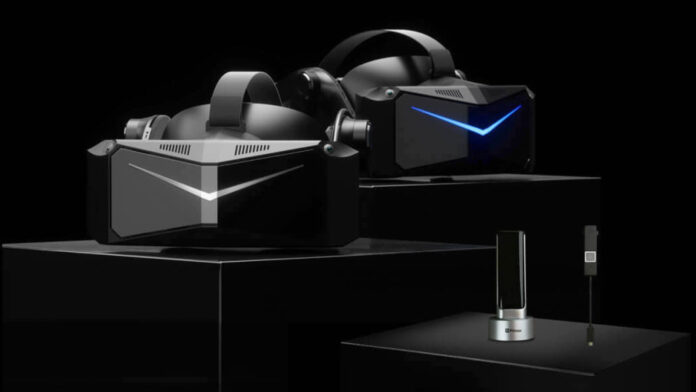Pimax has announced two new VR headsets. One looks like it’ll rival Meta Quest 3’s bid for the best value on the market. The other sets its sights on Apple Vision Pro, cornering the high-end for a much more affordable price tag.
Both feature a familiar design, building on the original Pimax Crystal, which launched in May 2023 for $1,599. Pimax Crystal Light is the entry-level model, halving the price and shaving the weight down. Pimax Crystal Super, however, amps things up to the next level with hot-swappable screens.
The only catch is that both are PC VR headsets that require you to hook them up to a system. Naturally, the cable offers a lot more power at the expense of wireless freedom.

Pimax Crystal Super
The shining star of the two, Pimax Crystal Super comes in swinging with 3840×3840 pixels per eye, increasing from 16.6 million to a total 29.6 million. Clarity doesn’t just come from resolution, though, as it’s far sharper than the original headset and comes in two flavours.
There’s the 120Hz QLED that’ll set you back $1,799 and 90Hz micro-OLED that costs $1,999 when you preorder. You only need to look at my MSI MPG 321URX QD-OLED review to see how much sharper colours tend to be with the deepest blacks and a near-infinite contrast ratio. Still, the QLED takes the cake here with less motion blur, which is probably more important with something stuck to your face. If you can’t decide, then there’s a $2,399 bundle that includes both. You can swap between them whenever you fancy.
It promises a huge field of view, no ghosting or glaring, and corrosion resistance. Only time will tell whether Pimax lives up to its lofty claims since it doesn’t attach any numbers here. At the very least, it’ll certainly come with integrated audio, inside-out tracking to keep you from bumping into things, and two controllers.

Pimax Crystal Light
Closely resembling the original headset, Pimax Crystal Light keeps the same 2880×2880 resolution but is 30% lighter. This is the benefit of not needing a battery or top strap cable. It’s perhaps a little concerning that it has no fans or heatsink for cooling, but there’s less of a need for it here.
The best part is the price. QLED with standard backlighting starts at $699, while local dimming with mini-LED backlighting pushes it up to $899. You’ll need to select which way you want to go at the point of purchase, as there are no backsies like the Super. Both options carry a lovely 120Hz refresh rate for smooth movement.
Slimming the cost comes at the sacrifice of a few features, as there are no eye-tracking or interchangeable lenses. It does come paired with integrated audio and two controllers, however.
Is it worth it?
Ditching the standalone option is a divisive choice, but the original Crystal headset didn’t exactly impress. Tossing aside the Qualcomm Snapdragon XR2 chip, memory, and storage means you’ll probably last longer in your gaming sessions. You can check them out on the Pimax website.
It’s difficult to say one way or another whether this is truly worth the price, but it’s worth considering if you already have a high-end PC at the ready. Those without a rig at the ready would probably find more comfort in a Meta Quest 3 from Amazon, which is ready to go without strings attached – literally and figuratively.


